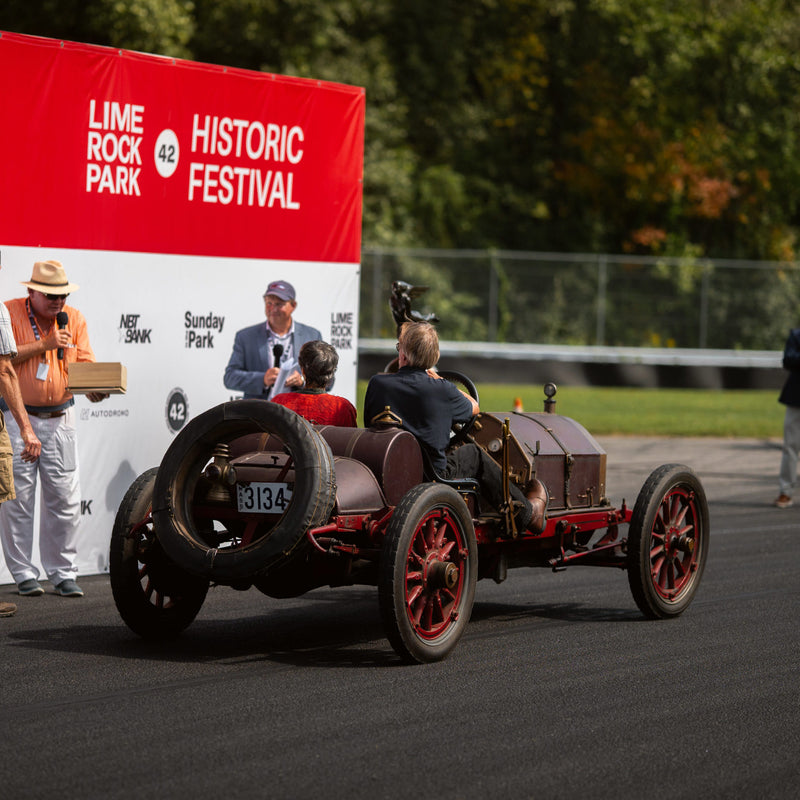Would you believe that this incredibly rare beauty (that used to be raced at Silverstone) was once “the ugliest car you had ever seen?” That's what its last British owner narrates in a letter from 2004 addressed to the first Italian collector who bought it. “It” being this sleek little 1959 Convair Mk1.




Back then it was painted red and silver and “there was a gullwing hardtop on it, while the headlamps had been blanked off and a pair of spot lamps mounted atop the bonnet instead.” However, beneath these rather ungainly additions was the superb shape we see today, and a sympathetic restoration was performed to uncover its original form. With low-volume cars like these (built in Britain’s quite literal cottage sports racer industry, made to be thrashed on track, etc.), it can often be the case that the difficult part of the restoration is not the work itself, but determining what’s been added over the years so just the right amount of layers are peeled back, with the restoration leaving as much of the original components as possible.
“It was re-sprayed with Jaguar’s Dark British Racing Green paint, too.” The former owner used the Convair on the road occasionally, but it was primarily a racing car under his custodianship.





As such, the car is equipped with a Ford Sidevalve (an E93A), which doesn’t make a lot of power in an absolute measure, but is more than enough to have fun with on track in this application. The 1172cc four-cylinder is attached to a three-speed manual gearbox. Of the handful of Mk1s known to have survived over the years, this one seems to be the only car complete with a chassis made by Convair. Founded in London in 1957, Convair Developments provided low-cost club racing cars directly for the Seven Fifty Motor Club's 1172 Formula, a regulated series that was introduced in 1953.
Convair chassis were multi-tube constructions, with fiberglass bodyshells available separately, in accordance with the aerodynamic esprit of the period. After the war, sports cars were too expensive for most club racers, and this heralded the era of the so-called “Specials,” which had its peak in the late 1950s. A Special was a hand-built car, assembled by the purchaser himself, and usually based extensively on the running gear of production road cars.



The 1172 Formula (1172 referring to the allowed engines’ capacity of 1172cc) was intended as a logical big brother to the Austin 7-based 750cc Formula, and its early grids were populated by Lotus, Buckler, Lola, Chevron, Convair, to mention a few. Point being, it wasn’t a high-flying alternative to Grand Prix racing, but it attracted a lot of engineering talent and some incredible talents behind the wheel—drivers like Graham Hill cut their teeth in the 1172 Formula.
Thanks to a revival in the early 1990s, the historic 1172 cars, in original specification, became eligible to compete in the 750 Trophy Series, reintroduced in 1994 by the very same Seven Fifty Motor Club. As a matter of fact, we can see that the last owner of this car in the U.K. used it for more than just the occasional Sunday picnics by having a look at the 1994 Silverstone 750 Trophy Race results, where the Convair finished in first place.





That owner also informed the next guy (who imported the car to Italy, if you recall) that “the engine would run to 7,000rpm, but the con rods were weak and often let go,” suggesting 6,000rpm as a safer limit after he replaced them. At the time the car was also “handicapped by being too heavy, owing to all the road-going equipment.” The enormous fuel tank didn't help either seeing as this is no enduro-racer, and the keen driver also “thought that the body was not quite straight on the chassis,” but never removed it to verify, as it looked too difficult a task. In fact, you may be able to tell that on the front axle the right-hand wheel is about a centimeter further out than the left.
Minor issues of alignment and equipment aside, this Mk1 has a respectable racing history to prove its ability to overcome its minor handicaps, and with just one of its previous owners this car racked up close to a dozen podium trophies in sprints and hill climbs. This gentlemen writes in a letter that “the wins include the first place at Prescott Hillclimb, and a victory in the Manx Pursuit Sprint.” Again, not Le Mans or Pikes Peak, but still, not bad for a little car put together in the garden.


In its country of origin, the car was in the hands of five owners until an Italian petrolhead with a strong passion for British cars bought it through his daughter, who was studying in England. Later on, it was the turn of one of his friends, Gino, to fall in love with the Convair Mk1, and he decided to purchase it in 2013. To Gino—who sadly passed away two years after he bought the Convair—the only cars worth owning were racing variants, and the more extreme they were, the more he liked them. Now his 42-year-old son is taking care of the Convair, and he enjoys taking it out for automotive gatherings and sports car events in Italy, along with the occasional drive for the hell of it. The first vintage car the father-and-son pair bought together was a Fiat 124 Sport Spider; the first thing Gino did to that car was cut away the retractable roof components to save some weight. Hardcore. “Without batting an eye, even when stopped at the traffic lights in the rain,” his son recalls fondly.






















































